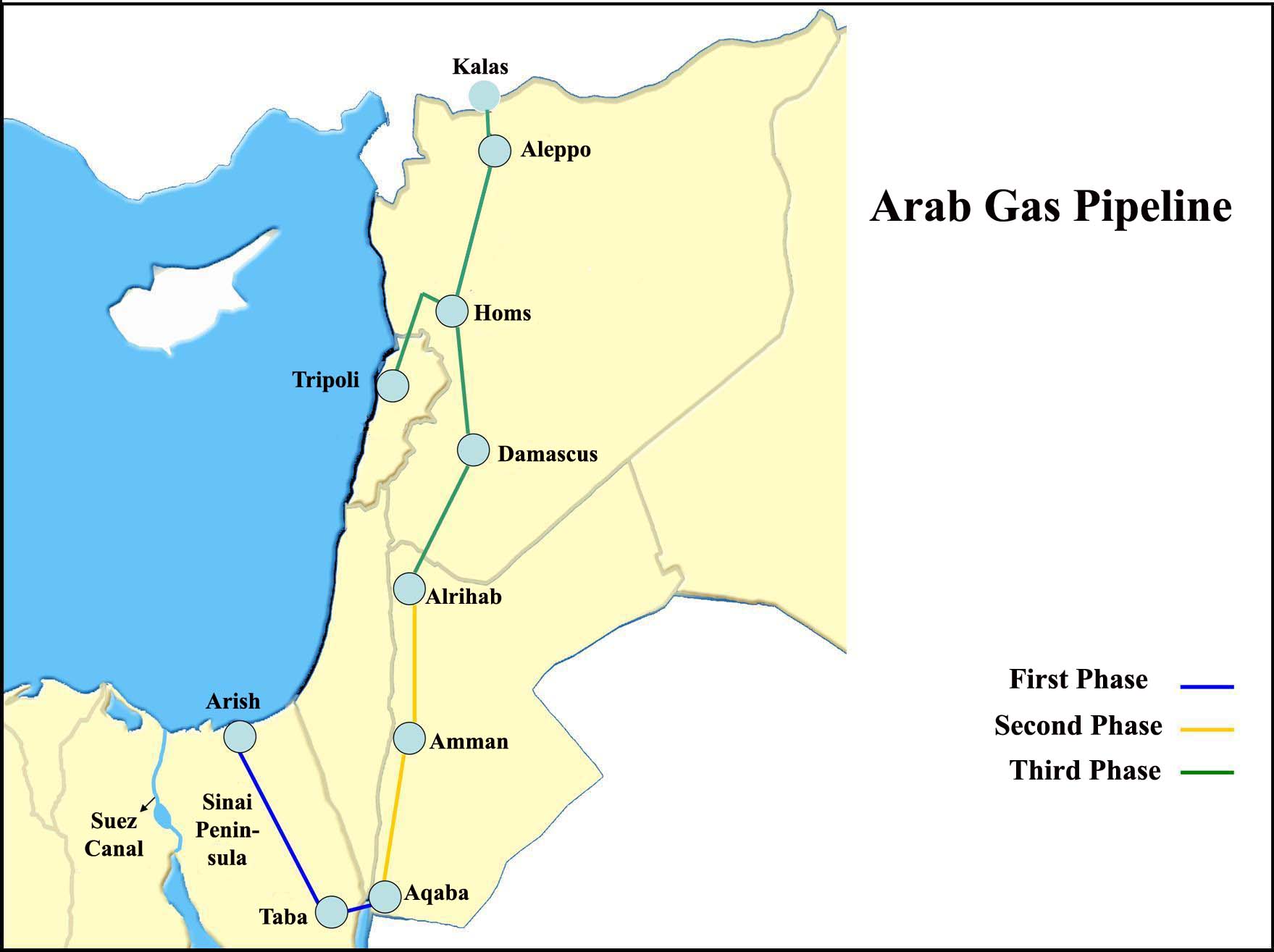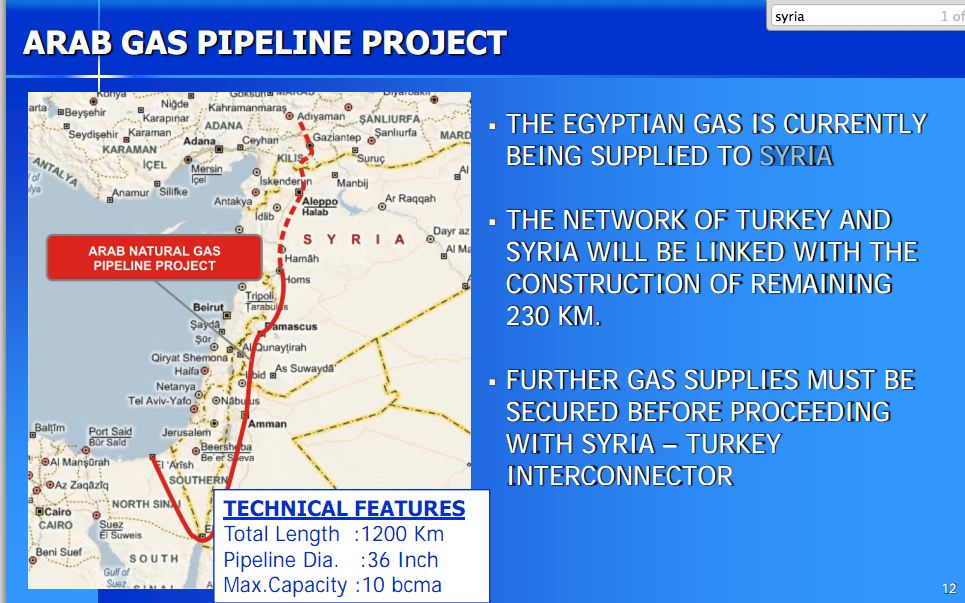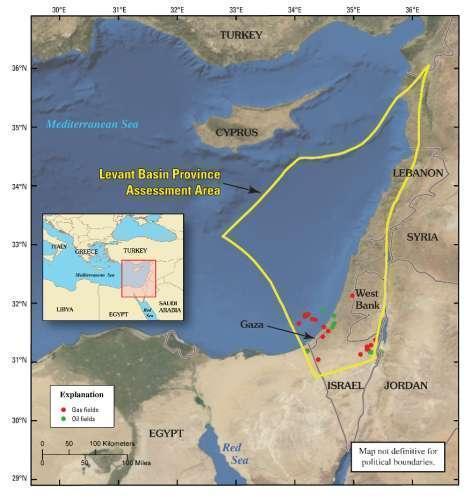It’s Always Been about Oil and Pipelines
The same issues which drove war and terrorism in the Middle East in the 1930s and 1940s are still driving it today
The best way to see this is to start with today, and work backwards …
The U.S. is bombing Iraq again in order to protect the major oil center in Erbil.
The war in Syria is also largely about oil and gas. International Business Times noted last year:
[Syria] controls one of the largest conventional hydrocarbon resources in the eastern Mediterranean.
Syria possessed 2.5 billion barrels of crude oil as of January 2013, which makes it the largest proved reserve of crude oil in the eastern Mediterranean according to the Oil & Gas Journal estimate.
***
Syria also has oil shale resources with estimated reserves that range as high as 50 billion tons, according to a Syrian government source in 2010.
Moreover, Syria is a key chess piece in the pipeline wars:
Syria is an integral part of the proposed 1,200km Arab Gas Pipeline:
Here are some additional graphics courtesy of Adam Curry:
So yes, regime change was planned against Syria (as well as Iraq, Libya, Lebanon, Somalia, Sudan and Iran) 20 years ago.
And yes, attacking Syria weakens its close allies Iran and Russia … and indirectly China.
But Syria’s central role in the Arab gas pipeline is also a key to why it is now being targeted.
Just as the Taliban was scheduled for removal after they demanded too much in return for the Unocal pipeline, Syria’s Assad is being targeted because he is not a reliable “player”.
Specifically, Turkey, Israel and their ally the U.S. want an assured flow of gas through Syria, and don’t want a Syrian regime which is not unquestionably loyal to those 3 countries to stand in the way of the pipeline … or which demands too big a cut of the profits.
A deal has also been inked to run a natural gas pipeline from Iran’s giant South Pars field through Iraq and Syria (with a possible extension to Lebanon).
And a deal to run petroleum from Iraq’s Kirkuk oil field to the Syrian port of Banias has also been approved:
Turkey and Israel would be cut out of these competing pipelines.
Gail Tverberg- an expert on financial aspects of the oil industry – writes:
One of the limits in ramping up Iraqi oil extraction is the limited amount of infrastructure available for exporting oil from Iraq. If pipelines through Syria could be added, this might alleviate part of the problem in getting oil to international markets.
If you don’t believe that the war in Syria is about access to oil and gas, keep reading …
The architects of the Iraq War (the one which started in 2003) themselves admitted it was about oil.
The Gulf war was also about oil. Specifically, Saddam Hussein’s invasion of Kuwait caused oil prices to skyrocket. The U.S. invaded Iraq in order to calm oil markets.
In its August 20, 1990 issue, Time Magazine quoted an anonymous U.S. Official as saying:
Even a dolt understands the principle. We need the oil. It’s nice to talk about standing up for freedom, but Kuwait and Saudi Arabia are not exactly democracies, and if their principal export were oranges, a mid-level State Department official would have issued a statement and we would have closed Washington down for August.
The Guardian reports that the U.S. and Britain planned regime change in Syria 57 years ago to guarantee the flow of oil:
Nearly 50 years before the war in Iraq, Britain and America sought a secretive “regime change” in another Arab country they accused of spreading terror and threatening the west’s oil supplies, by planning the invasion of Syria and the assassination of leading figures.
***
The document [was] approved by London and Washington ….
***
Syria also had control of one of the main oil arteries of the Middle East, the pipeline which connected pro-western Iraq’s oilfields to Turkey.
And between 1932 and 1948, the roots for the current wars in Iraq and Syria were planted. As Wikipedia explains:
The Mosul–Haifa oil pipeline (also known as Mediterranean pipeline) was a crude oil pipeline from the oil fields in Kirkuk, located in north Iraq, through Jordan to Haifa (now on the territory of Israel). The pipeline was operational in 1935–1948. Its length was about 942 kilometres (585 mi), with a diameter of 12 inches (300 mm) (reducing to 10 and 8 inches (250 and 200 mm) in parts), and it took about 10 days for crude oil to travel the full length of the line. The oil arriving in Haifa was distilled in the Haifa refineries, stored in tanks, and then put in tankers for shipment to Europe.
The pipeline was built by the Iraq Petroleum Company between 1932 and 1935, during which period most of the area through which the pipeline passed was under a British mandate approved by the League of Nations. The pipeline was one of two pipelines carrying oil from the Kirkuk oilfield to the Mediterranean coast. The main pipeline split at Haditha with a second line carrying oil to Tripoli, Lebanon, which was then under a French mandate. This line was built primarily to satisfy the demands of the French partner in IPC, Compagnie Française des Pétroles, for a separate line to be built across French mandated territory.
The pipeline and the Haifa refineries were considered strategically important by the British Government, and indeed provided much of the fuel needs of the British and American forces in the Mediterranean during the Second World War.
The pipeline was a target of attacks by Arab gangs during the Great Arab Revolt, and as a result one of the main objectives of a joint British-Jewish Special Night Squads commanded by Captain Orde Wingate was to protect the pipeline against such attacks. Later on, the pipeline was the target of attacks by the Irgun. [Background.]
In 1948, with the outbreak of the 1948 Arab–Israeli War, the official operation of the pipeline ended when the Iraqi Government refused to pump any more oil through it.
Why is this relevant today? Haaretz reported soon after the Iraq war started in 2003:
The United States has asked Israel to check the possibility of pumping oil from Iraq to the oil refineries in Haifa. The request came in a telegram last week from a senior Pentagon official to a top Foreign Ministry official in Jerusalem.
The Prime Minister’s Office, which views the pipeline to Haifa as a “bonus” the U.S. could give to Israel in return for its unequivocal support for the American-led campaign in Iraq, had asked the Americans for the official telegram.
The new pipeline would take oil from the Kirkuk area, where some 40 percent of Iraqi oil is produced, and transport it via Mosul, and then across Jordan to Israel. The U.S. telegram included a request for a cost estimate for repairing the Mosul-Haifa pipeline that was in use prior to 1948. During the War of Independence [what Jews call the 1948 war to form the state of Israel], the Iraqis stopped the flow of oil to Haifa and the pipeline fell into disrepair over the years.
***
National Infrastructure Minister Yosef Paritzky said yesterday that the port of Haifa is an attractive destination for Iraqi oil and that he plans to discuss this matter with the U.S. secretary of energy during his planned visit to Washington next month.
***
In response to rumors about the possible Kirkuk-Mosul-Haifa pipeline, Turkey has warned Israel that it would regard this development as a serious blow to Turkish-Israeli relations.
In other words, the same issues which drove war and terrorism in the Middle East in the 1930s and 1940s – oil, gas and pipelines – are still driving it today.
Postscript: There are also huge natural gas reserves off the coast of Gaza.








What's been said:
Discussions found on the web: